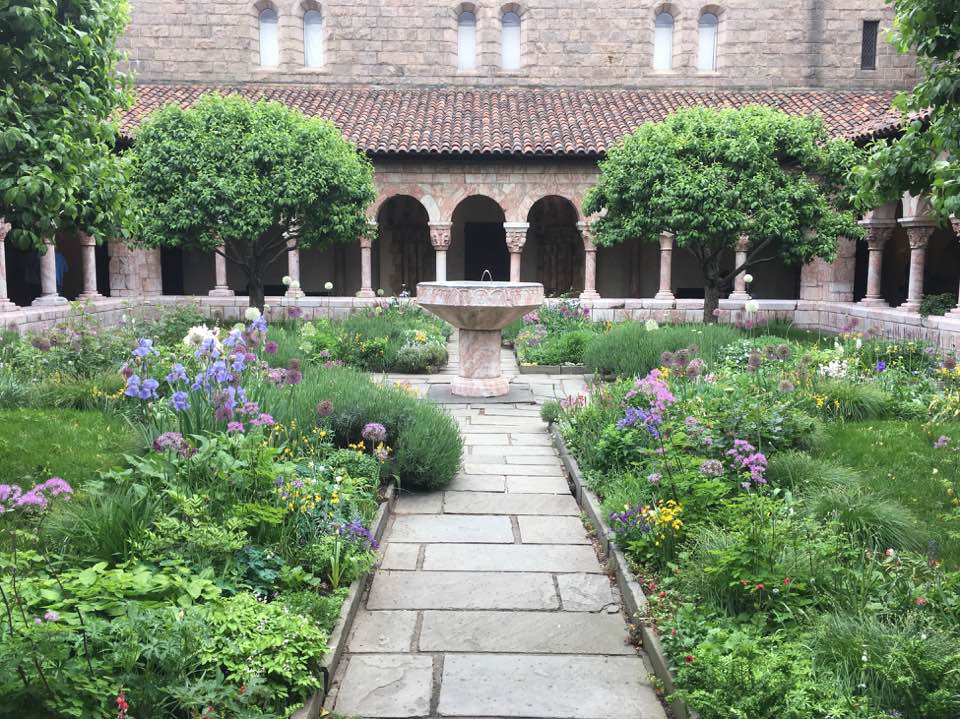
The Medieval Garden at the Cloisters in New York City
Not long ago, I visited The Cloisters in New York City. By definition, a cloister is an open hallway that surrounds a protected garden. It is a natural walkway where monks and nuns might retreat into nature and still have a degree of protection from the elements–like wind, rain, snow, sun–and other people, too.

Gene Boerner Rose Growin in Jacki Kellum’s Garden
For many years, I have worked diligently to create protected garden spaces where I live. There must be something nunnish or at least Medieval about me. If I had the resources, I would build a covered stone walkway around my garden, but I do not. I use other kinds of fences and hedges to create similarly private areas where I can watch my gardens grow.

Jacki Kellum Garden – Enclosed by a fence
That discussion lends itself to how I use my garden for meditation and as a retreat, but today, I want to talk about how I love the wattle that has been created for the gardens at the Cloisters in New York City.
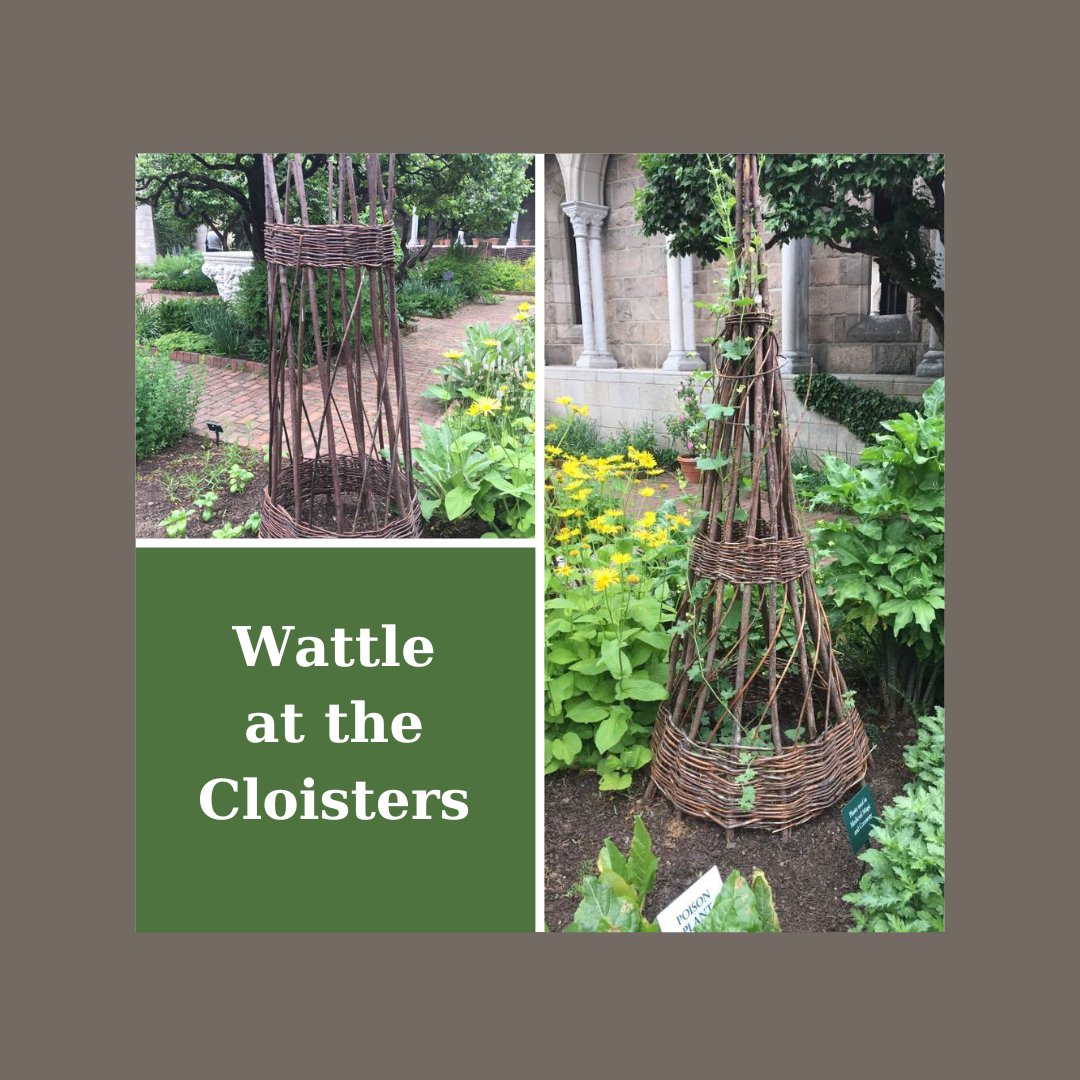
For several years, I have wanted to create some wattle structures for my garden, and this year, I plan to follow through. In this post, I’ll share some of the things that I know about wattle.
I know that wattle was used for garden supports and fences in Medieval Gardens, but research assures me that remnants of wattle date back to the Iron Age.
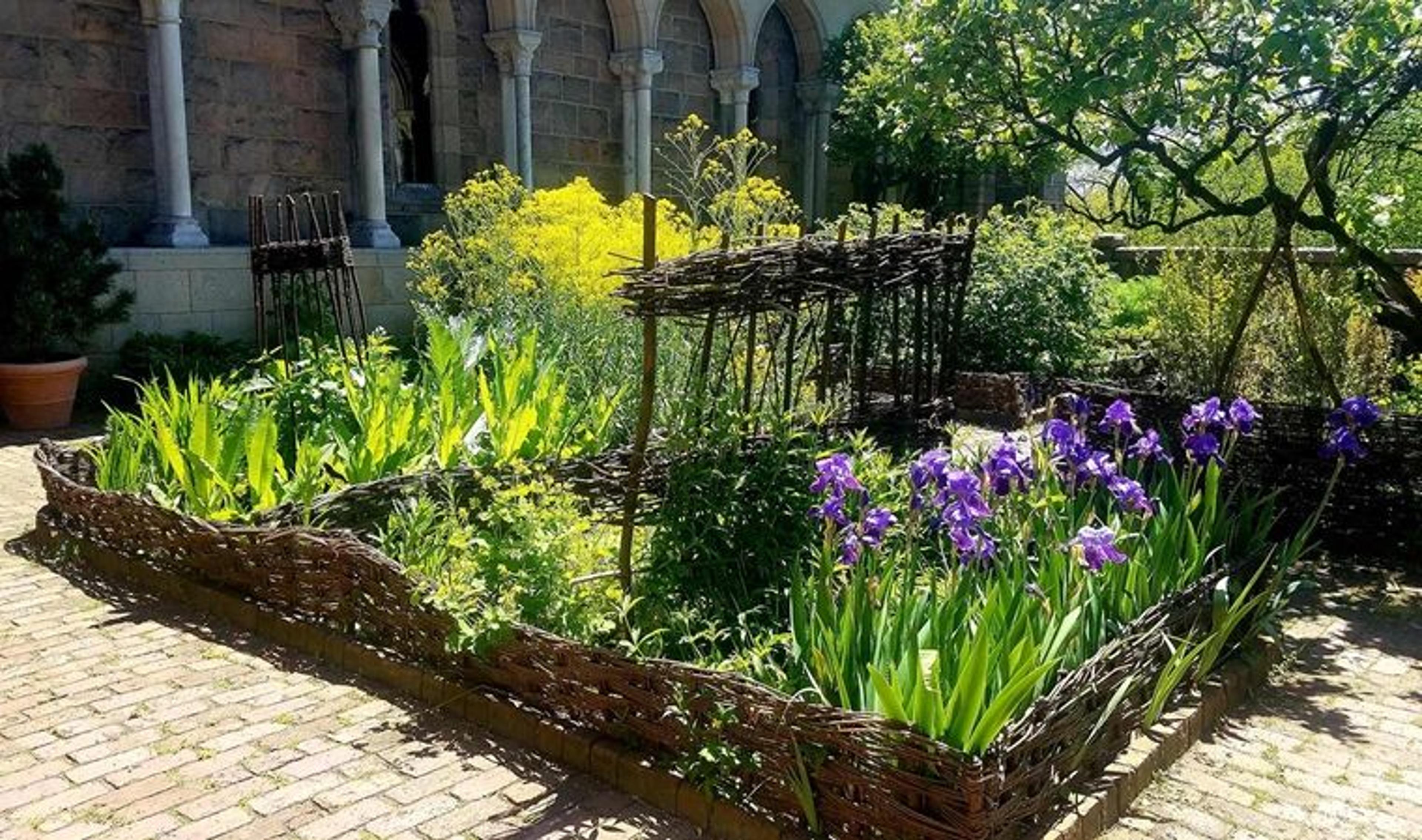
Wattle fences at the Cloisters
Image Credit: The Metropolitan Museum of Art
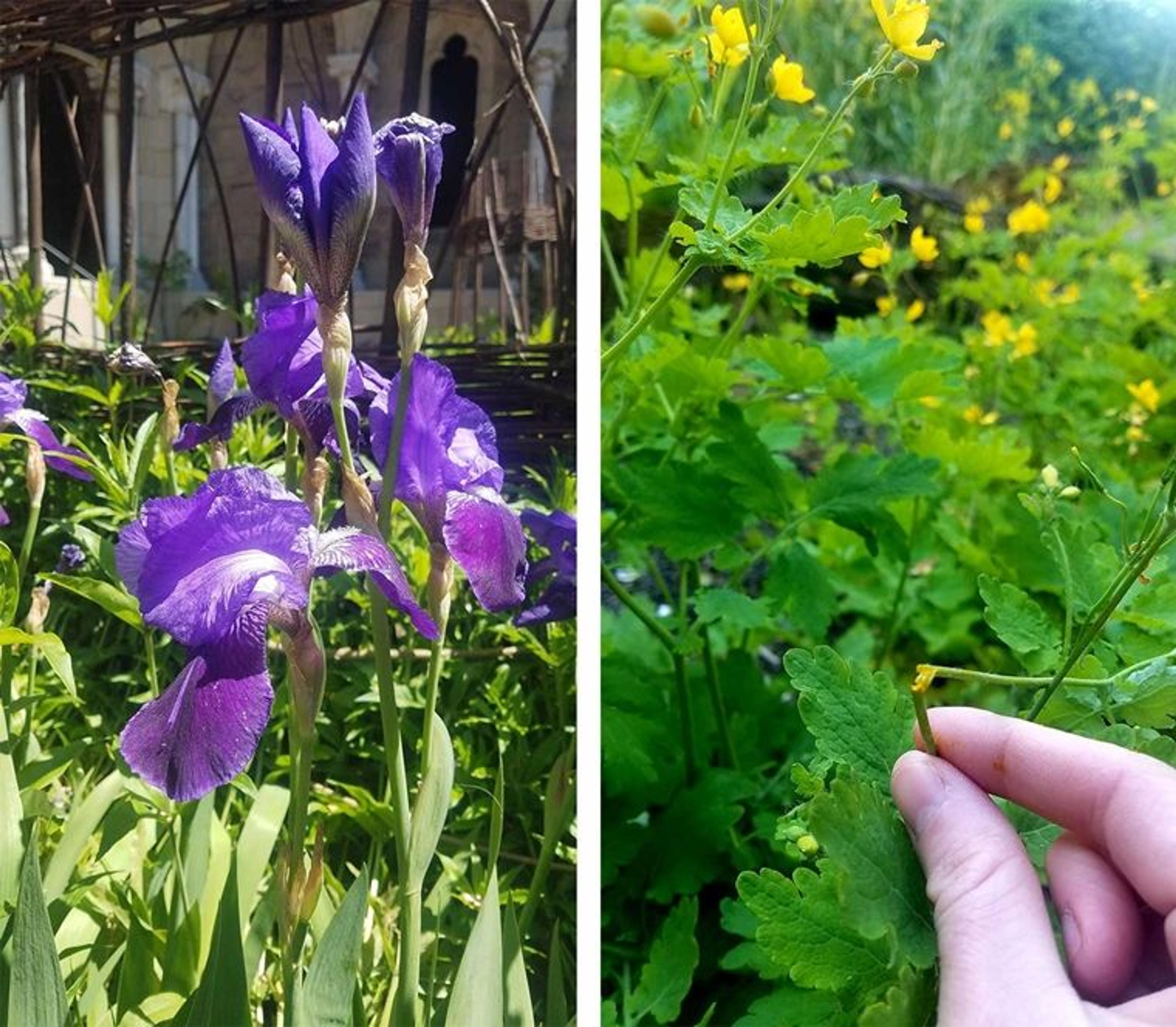
Left: The iris flower, which was used to make “iris green” paint. Right: the juice of a broken greater celandine stalk, which was used by artists as a substitute for gold.
“In our garden bed devoted to “plants used by medieval artists” (pictured above), visitors are often in awe of the golden-yellow juice that the stalk of the greater celandine (Chelidonium majus) plant releases when it is broken. Artists used this juice as a substitute for gold in medieval manuscripts (a book or document written by hand). The petals of the purple iris flower (Iris germanica) were mixed with alum (a chemical used for making paints) and used in medieval illumination (designs or pictures in gold or colors), the mixture was called “iris green. ”
“In our garden bed devoted to “plants used in the medieval household,” English lavender (Lavandula angustifolia) and plants of the genus Artemisia like southerwood were known as ‘strewing herbs; because they were scattered on the floor (or ‘strewn about’) to release their pleasant odors. Many flowers—such as roses (Rosa gallica), violets (Viola sp.) and pinks (Dianthus sp.)—were admired for their beauty as well as their useful fragrances. Rose petals were dried and used to perfume drawers. They could be soaked in water and transformed into rose water. Rose water was used for medical purposes during the medieval ages. It was also used for bathing.” The Metropolitan Museum of Art
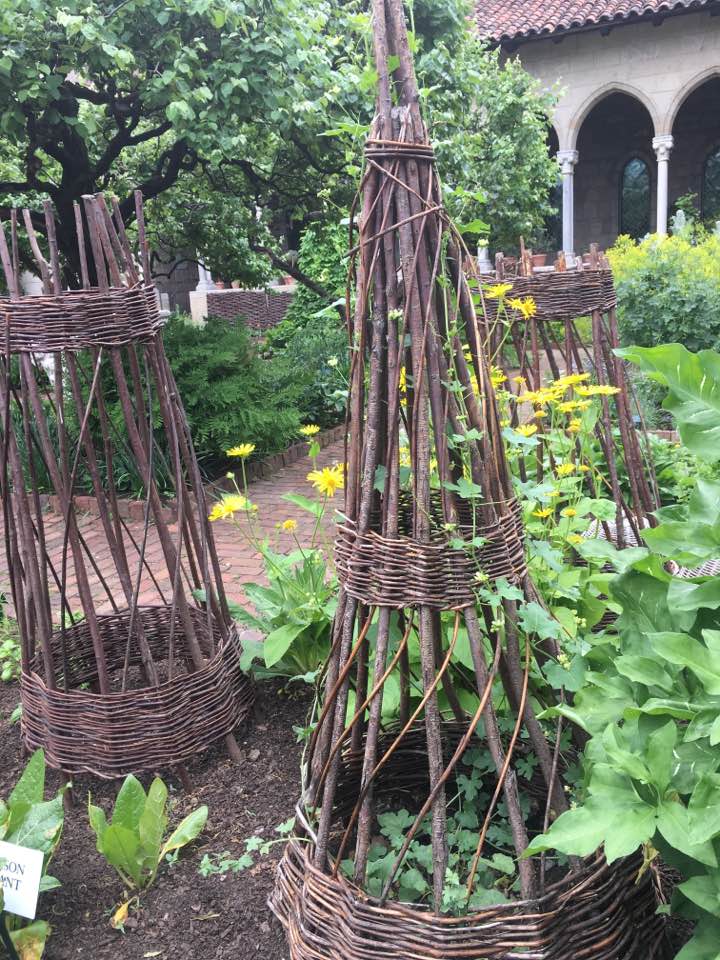
Wattle at the Cloisters in New York City
The braid at the base of the wattled structure above is a type of weaving. Many baskets employ the same technique.
Wattle is a Type of Weaving
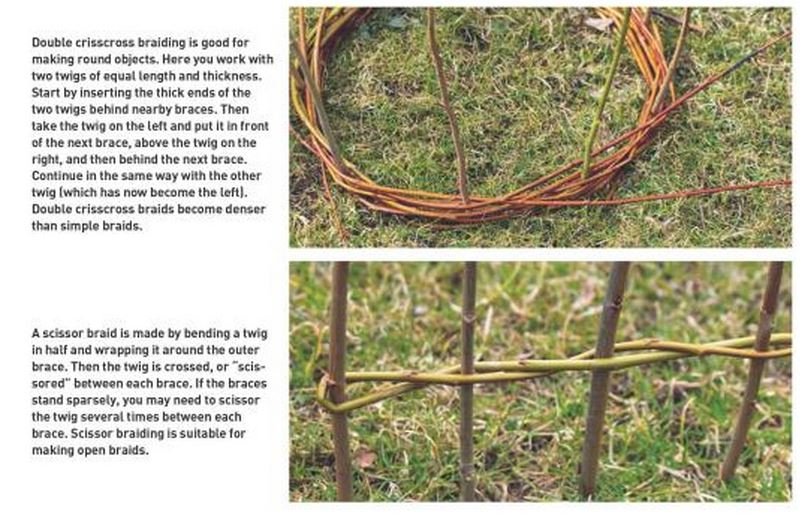
Image Credit: Rustic Garden Projects by Marianne Svard Haggvik
Buying enough basket weaving materials to make wattle for a garden could be quite expensive, and my lack of materials has been a hindrance before. But I have several things growing in my current garden that I will try weaving for some projects I have planned for this year.
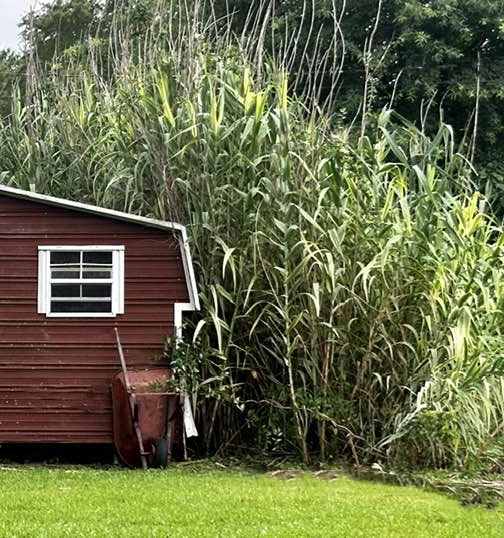
Peppermint Cane Growing at the Back of Jacki Kellum Garden
Since ancient times, cane has been used for weaving. At the base, each of the canes is thick and rigid, but at the tip, the canes are thinner and more spindly. I’ll use the thicker parts of the cane as the upright supports, and I’ll use some of the more spindly pieces for the braids.
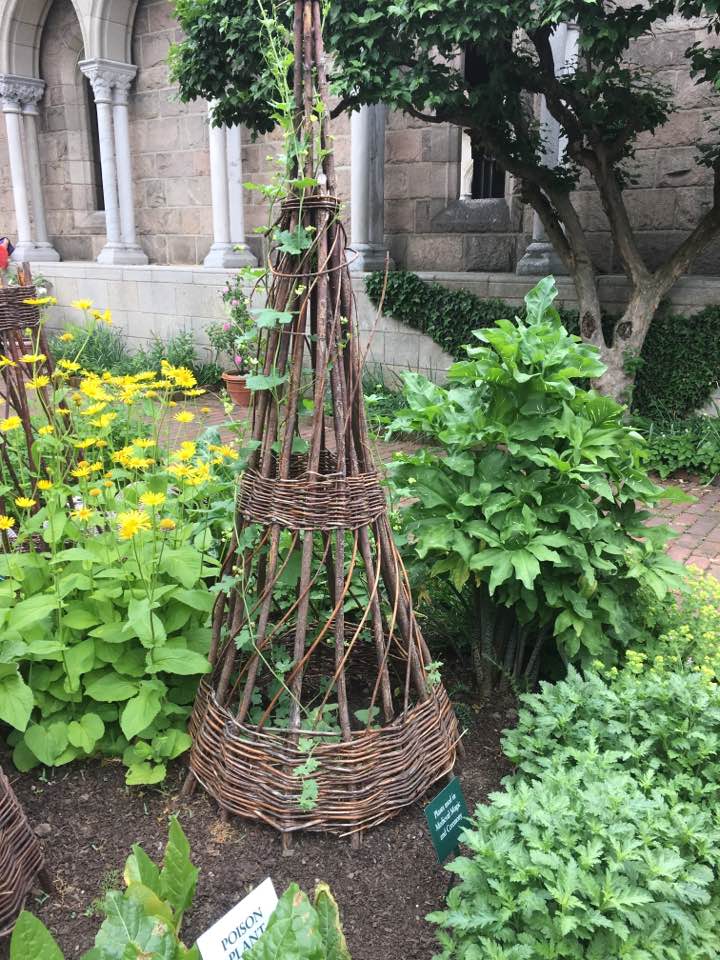
Wattle at the Cloisters in New York City
The pieces needed for the braid should be long and flexible. Notice that the thicker support pieces are planted into the soil. The braid is worked over and under around the supports.
Certainly, the wattle piece is more aesthetic than the wiry tomato cages that are readily available at Walmart, and since my garden is both a flower garden and a vegetable garden, I opt for the more aesthetic wattle supports.
How to Create A Kitchen Garden — A French Potager — Includes Free Plan
Last year, I created bean teepees out of the thicker canes.
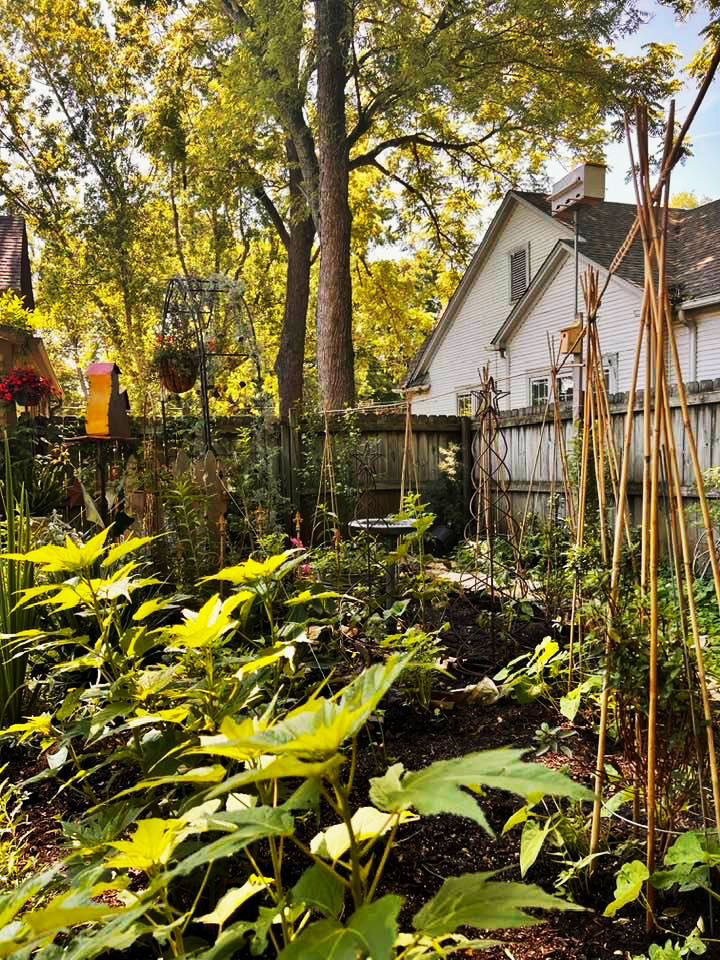
Bean Teepees in Jacki Kellum’s Garden
This year, I’ll create more bean teepees, and I’ll braid them together at the bottom, and gather them at the top in a Japanese eye.
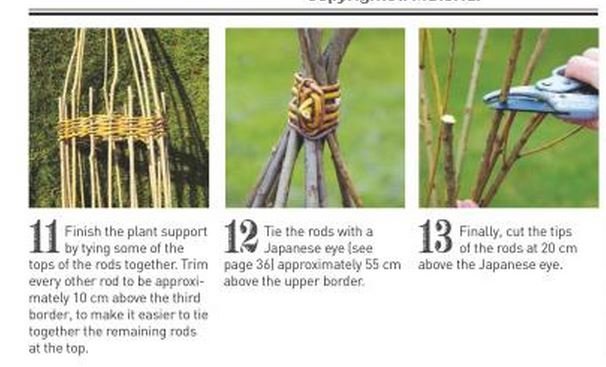
Image Credit: Rustic Garden Projects by Marianne Svard Haggvi
“In the Middle Ages (the period of European history from about 500 to about 1500 A.D.), life was closely connected to the rhythms and cycles of nature. Medieval herbs were transformed into medicine, food, beverages, dyes, and fiber (a material, such as cloth), and some were even thought to hold magical properties. At The Met Cloisters, many of these useful plants grow in the Bonnefont Herb Garden, which is designed with a series of raised garden beds that are organized according to how each plant is used. The “medieval vegetable and salad” garden bed includes plants such as garlic, parsley, and kale, which were common staples in the medieval diet and are still eaten today.” The Metropolitan Museum of Art
In my next post, I’ll tell you about some of the plants that I saw growing in the gardens at the Cloisters. Again, the gardens there replicate a Medieval garden.

Work Cited:

Image Credit: Rustic Garden Projects by Marianne Svard Haggvik
Discover more from Jacki Kellum
Subscribe to get the latest posts sent to your email.